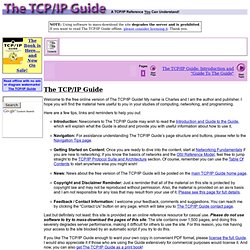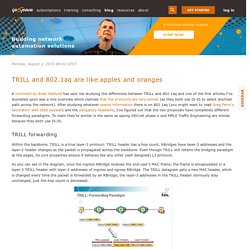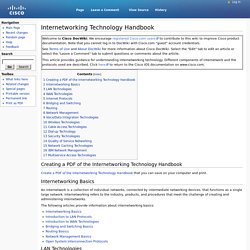

Troubleshooting VPNs. Troubleshooting VPNs By Mark Lewis More Information VPNs are complex, so when things go wrong, they can be difficult to troubleshoot.

What are your options? One option is to contact Cisco TAC. Table of Contents the trusted technology learning source View Your Cart Account Sign In. The TCP/IP Guide. The TCP/IP Guide Welcome to the free online version of The TCP/IP Guide!

My name is Charles and I am the author and publisher. I hope you will find the material here useful to you in your studies of computing, networking, and programming. Here are a few tips, links and reminders to help you out: Introduction: Newcomers to The TCP/IP Guide may wish to read the Introduction and Guide to the Guide, which will explain what the Guide is about and provide you with useful information about how to use it.
Last but definitely not least: this site is provided as an online reference resource for casual use. If you like The TCP/IP Guide enough to want your own copy in convenient PDF format, please license the full Guide. CCIE Practical Studies, Volume II. CCIE Practical Studies, Volume I. Packet Life. Welcome to GNS3Vault. Cisco Router Simulator Network Labs & Topologies For CCENT, CCNA, CCNP & CCIE Candidates! Network Tools. Cisco IOS Hints and Tricks: TRILL and 802.1aq are like apples and oranges. A comment by Brad Hedlund has sent me studying the differences between TRILL and 802.1aq and one of the first articles I’ve stumbled upon was a nice overview which claimed that the protocols are very similar (as they both use IS-IS to select shortest path across the network).

After studying whatever sparse information there is on 802.1aq (you might want to read Greg Ferro’s fascination with IEEE paywall) and the obligatory headache, I’ve figured out that the two proposals have completely different forwarding paradigms. To claim they’re similar is the same as saying DECnet phase V and MPLS Traffic Engineering are similar because they both use IS-IS. TRILL forwarding Within the backbone, TRILL is a true layer-3 protocol: TRILL header has a hop count, RBridges have layer-3 addresses and the layer-2 header changes as the packet is propagated across the backbone. 802.1aq forwarding The ingress PBB (Provider Backbone Bridge) takes the user’s MAC frame and encapsulates it in 802.1ah MAC frame.
Packet, Frames, Switching, Routing, Fabrics, Data Centres — Network design, architecture, thinking, working. Tech. Network Scanning. Designing Site-to-Site IPsec VPNs - Part 2. Internetworking Technology Handbook. From DocWiki Creating a PDF of the Internetworking Technology Handbook Create a PDF of the Internetworking Technology Handbook that you can save on your computer and print.

Internetworking Basics An internetwork is a collection of individual networks, connected by intermediate networking devices, that functions as a single large network. Internetworking refers to the industry, products, and procedures that meet the challenge of creating and administering internetworks. The following articles provide information about internetworking basics: LAN Technologies A LAN is a high-speed data network that covers a relatively small geographic area.
The following articles provide information different LAN technologies: WAN Technologies A WAN is a data communications network that covers a relatively broad geographic area and that often uses transmission facilities provided by common carriers, such as telephone companies. Internet Protocols Bridging and Switching Routing Network Management Wireless Technologies. IPv6 Autoconfiguration - The Internet Protocol Journal - Volume 7, Number 2. Since 1993 the Dynamic Host Configuration Protocol (DHCP) [1] has allowed systems to obtain an IPv4 address as well as other information such as the default router or Domain Name System (DNS) server.

A similar protocol called DHCPv6 [2] has been published for IPv6, the next version of the IP protocol. However, IPv6 also has a stateless autoconfiguration protocol [3], which has no equivalent in IPv4. DHCP and DHCPv6 are known as stateful protocols because they maintain tables within dedicated servers. However, the stateless autoconfiguration protocol does not need any server or relay because there is no state to maintain.
This article explains the IPv6 stateless autoconfiguration mechanism and depicts its different phases. Every IPv6 system (other than routers) is able to build its own unicast global address. Address types have well-defined destination scopes: global, site-local and link-local. At minimum, a NIC is associated with a single link-local address. . [6] Prefix delegation: